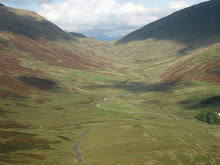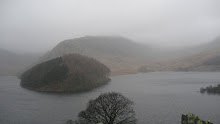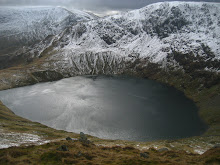


Photo's
1 - Joan's cafe outside the stadium
2 - The Wearmouth Colliery wheel with Bethany, Zahava, Sammy Jo & Bailey.
3 - My two young lion cubs in the Stadium of Light
4 - My two young lion cubs before a friendly with Juventus
What am I doing showing you all these wonderful scenic and historic sites in England without first showing you what I think is the coolest place in England. The Stadium of Light in Sunderland in England's beautiful north east. As a young lad growing up in Durham I would watch Sunderland every home game at their old stadium Roker Park I was first taken there in 1976 by my Grandad although I had been introduced to his beloved Sunderland as a toddler prior to their 1973 F.A cup victory over Leeds United at Wembley. His team became my team the only difference being that when he was a youth Sunderland were winning everything, in my lifetime I have known them win the F.A cup once with plenty of promotion and relegation battles thrown in. Non the less the motto of my Grandads regiment the Durham Light Infantry is ' faithful' and that is what I am to my team. I live in the south of England now having moved away from Durham city in 1995 but my two young daughters are now keen Sunderland fans and I like to take them to a match or two when we travel up to visit Grandma in Durham. Sunderland moved from their old stadium Roker Park to the Stadium of Light in 1997 and although I have many memories of being frozen by the winds coming in from the North Sea into Roker whilst watching Stan Cummings, Gary Rowell & Marco Gabiadinni amongst many other Sunderland legends I much prefer the new stadium and its facilities although I miss being on the sea front.The Stadium of Light is on the banks of the River Wear and was erected on the site of the old Monkwearmouth deep sea colliery and it has become the cathedral of the city as Sunderland does not have an actual cathedral to correctly call itself a city. It's capacity is 49,000 with plans to raise it to 66,000 when the club establishes itself as one of the English greats again hopefully this will not be too long. With the stadium being built on the site of the old colliery the club has incorporated some links to it on their new crest which replaced the fans favourite in 1997. The old crest had a ship on it signifying that Sunderland was a shipbuilding town , it was at one point the biggest shipbuilding town in the world but with the decline of ship building in England Sunderland ceased to function with this grand title. In 1997 with the new stadium, Sunderland released it's new crest, it is divided into four quarters; the upper right and lower left featured the traditional red and white of Sunderland. The upper left section features the Penshaw Monument and the lower right section shows the Wearmouth Bridge. A colliery wheel lies at the top of the crest, to commemorate County Durham's mining history, and also the land the Stadium of Light lies on, which was formerly Monkwearmouth Colliery. The crest also contains two lions, the black cats of Sunderland and a banner reading the club's motto Consectatio Excellentiae which means In pursuit of excellence. Prior to WW2 Sunderland were league champions six times: in 1892, 1893, 1895, 1902, 1913, and most recently in 1936, when they became the last team wearing striped shirts to win the league. They were elected into The Football League in 1890, becoming the first team to join after the league's birth in 1888. Sunderland stayed in the top flight until 1958, a record which only Arsenal, in 1992, surpassed. They have a long-standing rivalry with local team Newcastle United whom are known by Sunderland fans as 'the skunks' because of their black and white striped shirts.The Tyne-Wear derby has been contested since 1898 but the rivalry goes back to the English civil war when Newcastle was a royalist city whilst Sunderland was a parliamentarian town. A Davy lamp monument stands outside the stadium, as a reminder of the Monkwearmouth Colliery that the stadium was built on. The mascot of Sunderland A.F.C is the black cat there is a long historical link between Black Cats and Sunderland; including the "Black Cat Battery", a battery gun based on the River Wear. Raine's "Eye Plan" of c.1785–90 shows two of the (ultimately four) gun batteries on the south side of the Wear which guarded the rivermouth during the Napoleonic wars.This battery site would later evolve into Militia Barracks during the course of the nineteenth century. An annotation to the 1984 published version of Raine's Eye Plan states that one of the two batteries was named the John Paul Jones Battery after the American naval hero who sailed down the English East coast in 1779 with a squadron of warships intending to disrupt the coal trade. In 1805 the battery was manned by local militia, the Sunderland Loyal Volunteers, one of whom was a cooper by trade named Joshua Dunn. He, it was said, "fled from the howling of an approaching black cat, convinced by the influence of the full moon and a warming dram or two that it was the devil incarnate". From that point onwards the John Paul Jones Battery was known as the Black Cat Battery. Sunderland fans or Mackems as they are known have proved to be the noisiest fans in the English football league for three years in a row in a study carried out by phone number service 118118 ,they came out on top in terms of the sound level and frequency of their chants. The average peak volume measured at The Stadium of Light was 129.2 decibels – almost as loud as a jet. Why not come along next time your in the area tickets can be purchased from www.safc.com. When you visit the stadium you will find Joan's cafe I visit here for a pre match meal every time I attend a game, it's not posh it's a traditional working class environment that the miners & shipbuilders of bygone times would have approved of , the food and friendly service is legendary & I will be in there this coming Saturday with my young lion cubs and their two cousins for the West Ham match. Haway the Lads.







































